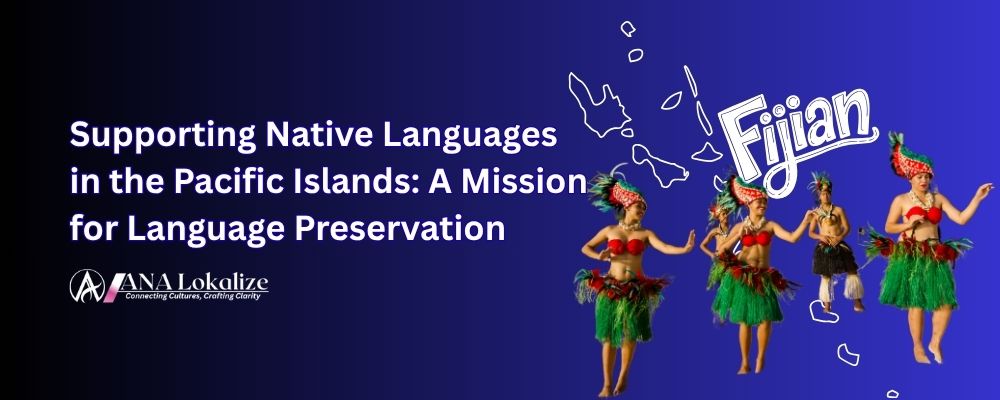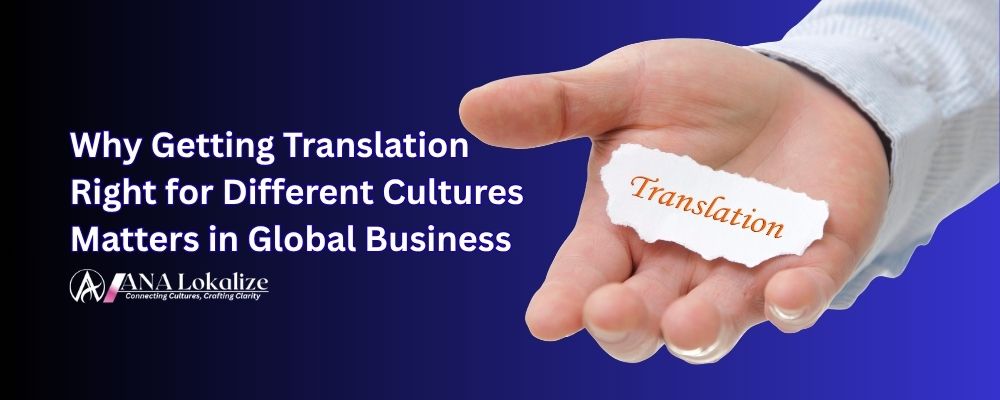Supporting Native Languages in the Pacific Islands: A Mission for Language Preservation

The Pacific Islands are home to some of the most unique and culturally rich communities in the world. Stretching across Polynesia, Micronesia, and Melanesia, this region holds hundreds of distinct languages—each representing the voice of a people, their traditions, stories, and way of life.
But many of these native languages are in danger. As global languages like English, French, and Mandarin continue to dominate education, media, and government, native tongues are slowly fading from everyday use. With every passing generation, the risk grows larger.
At ANA Lokalize, we believe that supporting native languages in the Pacific Islands is more than a responsibility—it is a mission for cultural survival. Through our dedicated translation, interpretation, and cultural preservation services, we aim to keep these languages alive and relevant in the modern world.
The Language Landscape of the Pacific
The Pacific Islands are not a single region—they are a collection of thousands of islands spread across a massive area of ocean. Within these islands are over 1,200 native languages, making this one of the most linguistically diverse regions on Earth.
These languages can be grouped into three major regions:
1. Polynesia
Languages such as Samoan, Tongan, Maori (New Zealand), and Hawaiian are part of the Polynesian family. Many of these languages have rich oral histories and strong cultural ties.
2. Micronesia
Includes languages such as Chuukese, Kosraean, Gilbertese (Kiribati), and Marshallese. Many Micronesian languages are spoken by small populations and are considered endangered.
3. Melanesia
Papua New Guinea alone has over 800 languages, including Tok Pisin, Huli, Enga, and Melpa. The Solomon Islands, Vanuatu, and Fiji also contribute to the vast number of Melanesian tongues.
This diversity is a treasure—but it also poses a major challenge when it comes to language preservation and communication in modern systems like healthcare, law, and education.
Why Native Language Preservation Matters
Languages are not just tools for communication. They hold the soul of a culture. When a native language disappears, it takes with it:
Traditional knowledge about the environment, medicine, and navigation
Folklore, songs, and oral stories passed down over centuries
Spiritual beliefs and rituals
Unique ways of seeing and describing the world
For the Pacific Islands, where traditions are closely linked to identity and history, losing a language can mean losing a part of the community’s heritage.
That’s why preserving and supporting native Pacific languages is not a luxury—it’s a necessity.
The Risk of Language Extinction in the Pacific
Experts warn that many Pacific languages are at risk of extinction within the next 50 years. Some reasons include:
Urban migration: Young people move to cities and adopt dominant languages.
Education systems: Most schools teach in English or French, not in native languages.
Media and internet use: Global languages dominate digital content, leaving native languages behind.
Government policies: Many island nations do not have strong policies to support native language use in official settings.
For example, the language Nukumanu, spoken in a small area of Papua New Guinea, has fewer than 500 speakers. Kosraean, native to the island of Kosrae in Micronesia, has fewer than 10,000 speakers and is being used less among younger generations.
The danger is real. But the solution is within reach—with the right support, awareness, and action.
How ANA Lokalize Supports Pacific Island Languages
At ANA Lokalize, our mission is to help communities, governments, and businesses connect across language and culture—without losing what makes them unique. Here’s how we support native Pacific languages:
1. Professional Translation Services
We offer high-quality translation in a wide range of Polynesian, Micronesian, and Melanesian languages. This includes:
Translating educational materials into native languages
Supporting healthcare providers with localized patient forms
Translating legal documents, consent forms, and government policies
Our translators are native speakers or local experts, ensuring accuracy and cultural appropriateness.
2. Cultural Consultation and Localization
It’s not enough to just translate words. We help our clients adapt their content to the cultural context of each Pacific Island community. This includes:
Local customs and taboos
Color and symbol meanings
Community values and norms
Whether it's a marketing campaign or a public health message, we make sure the message feels local and respectful.
3. Interpreter Services for Vital Services
For hospitals, schools, courts, and aid organizations, we provide on-site and remote interpreters in Pacific Island languages. This ensures that native speakers:
Understand their legal and healthcare rights
Can participate fully in public life
Are not left behind due to language barriers
4. Language Documentation and Preservation
We partner with cultural organizations, schools, and local leaders to record and document endangered languages. This includes:
Creating digital dictionaries
Recording audio of native speakers
Translating oral histories into written form
Supporting bilingual education programs
This not only preserves the language but makes it accessible for future generations.
Why Supporting Pacific Languages Helps Everyone
Preserving native languages is not just about saving culture—it also brings real-world benefits:
Improved public health: Patients are more likely to follow medical advice if it’s given in their own language.
Stronger education: Children learn better when taught in both their native and national languages.
Greater inclusion: When government services are available in native languages, citizens feel more empowered.
Economic opportunity: Businesses that speak the language of their customers build stronger trust and loyalty.
Language inclusion is not a cost—it’s a long-term investment in people and communities.
What Can Be Done to Support This Mission?
Whether you're a government agency, nonprofit, business, or individual, there are ways to support language preservation in the Pacific:
Use local languages in public communication, especially for health, education, and safety
Support bilingual education in schools
Hire translators and interpreters for public-facing content and services
Fund local language projects such as documentation, apps, and language learning programs
Promote Pacific languages online, through websites, podcasts, and social media
Respect and learn a few words or phrases in the local language when visiting or working in the region
ANA Lokalize: Your Partner in Language Preservation
At ANA Lokalize, we are proud to stand with Pacific Island communities in their mission to keep their languages alive. Our team brings together:
■ Native linguists from across Polynesia, Micronesia, and Melanesia
■ Expertise in healthcare, legal, educational, and cultural content
■ Deep respect for indigenous knowledge and storytelling
■ Flexible, secure, and reliable translation and interpretation solutions
We are more than a language service provider—we are a partner in preserving history, identity, and community strength.
Final Thoughts
Every time a native speaker uses their language in school, at the clinic, or in government offices, that language grows stronger. Every time a child learns the songs and stories of their ancestors in their mother tongue, culture takes root.
The Pacific Islands are more than beautiful places—they are living cultures with voices that must be heard.
Supporting native languages in the Pacific is not just about words. It is about dignity, respect, and the right to exist in one’s own voice.
At ANA Lokalize, we are proud to be part of this mission. Together, we can ensure that no language—and no community—is left behind.
Stephane B. Atangana
Professional translation and localization experts with 10 years of experience in helping businesses connect with global audiences.
Search Articles
Related Articles

key to successful corporate communication, AI vs Human translation

Why Getting Translation Right for Different Cultures Matters in Global Business

Translation vs. Localization: Why the Difference Is a Big Deal
Subscribe to Our Newsletter
Get the latest translation insights and industry news delivered to your inbox.
We respect your privacy. Unsubscribe at any time.
